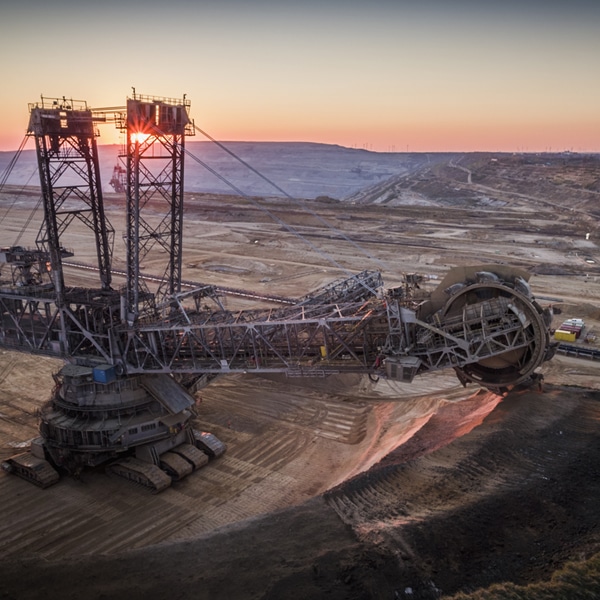EVERYTHING YOU NEED TO KNOW ABOUT THE CANADIAN SR&ED PROGRAM
What is SR&ED?
The Scientific Research and Experimental Development (SR&ED) is a Canadian federal tax incentive program designed to encourage businesses of all sizes to conduct R&D in Canada. The program is administered by the Canada Revenue Agency (CRA). It provides eligible businesses with refundable and non-refundable investment tax credits and deductions for qualified expenditures. SR&ED tax incentives make it more attractive for businesses to invest in innovative projects with plans to achieve technological advancements The tax incentives help potential claimants and qualifying corporations offset some of the costs of conducting research and development.
SR&ED Eligibility
In order for a company to be eligible for the Scientific Research and Development Tax Credit, it must incur expenses related to scientific research and development activities in Canada. Activities must aim to achieve advances in technology, and involve some form of scientific or technological uncertainty.
- Technological Advancement: The goal of the experimental development stage is to produce information that helps you understand how things work. In a business sense, this means that you need to attempt to create something new or improve what you have so that it is better than before.
- Scientific or Technological Uncertainty: Scientific or Technological uncertainties are challenges relating to existing methods and procedures that are insufficient to solve a problem by experienced professionals in the field. Any expert working on the project must attempt to overcome any technological limitations that could not predict the outcome with their existing training and knowledge base.
- Technological Content: In order to be eligible, your scientific research project must have been done systematically. This includes documenting your process. Identifying unknowns or problems, developing a hypothesis about how to solve them, testing and experimentation, and analyzing the process to reach your conclusion are all examples of what needs to be included.
Reference: Guidelines Eligibility Work SRED Tax Incentives
Qualifying Activities
The following activities qualify for the SR&ED program:
- Basic research: Basic research aims to increase scientific knowledge and understanding without a specific practical application.
- Applied research: Applied research aims to increase scientific knowledge and understanding with a specific practical application.
- Experimental development: Experimental development is undertaken in order to achieve technological advancement for the purpose of creating new or improved products or processes.
Who can submit an SR&ED tax credit claim?
Any Canadian businesses, sole proprietorships, partnerships, and even certain non-profit organizations can submit a SR&ED tax credit claim
The organization must have carried out qualifying scientific research and experimental development work in Canada during the current taxation year or within the last two taxation years. Organizations claiming the federal tax credit may also be able to claim provincial or territorial credits.
The SR&ED program is available to any Canadian taxpayer involved in basic research, applied research or experimental development.
The three groups of eligible taxpayers are:
- Canadian controlled private corporations
- Other corporations, and
- Individuals or proprietorships
Eligible Industries





















SR&ED Expenditures Calculation
If you want to estimate how much your tax incentives are worth, our calculator can help. Enter your business information into the calculator and we’ll do the rest. With this information, you’ll be able to make more informed decisions about your business’ tax strategy.
SR&ED Claim Process
The Canada Revenue Agency requires thorough documentation to grant an acceptable SR&ED claim. If you don’t have good documentation and time recording, your potential claim’s chances of success may be reduced. The CRA wants all documentation to explain the technological difficulties and how much time was spent trying to overcome them as work progresses.
There is always a chance that the Canada Revenue Agency (CRA) will look more closely at your SR&ED claim to make sure all the requirements are met. If you want to avoid your claim being flagged, you need to be well-informed about the review process and make better decisions about whether or not to proceed with the claim.
When to submit your claim?
You can submit your SR&ED claim any time during the year. To receive your tax credits or refund as quickly as possible, you should submit your completed claim form within six months of the end of your fiscal period at the time your corporate tax return is due.
SR&ED Claim Preparation
Preparing for a first SR&ED Claim
If you’re a new claimant filing an SR&ED claim, understanding the CRA’s expectations for your claim may be difficult. However, there are a few crucial pointers to remember in order for your claims to be accepted:
- Getting the details right: All of the information must be correct when you submit an SR&ED claim. This implies that the work was correctly completed and that your descriptions were accurate and thorough in conveying a clear picture of what was done and why.
- Keeping records: You must keep track of your costs and invoices from each vendor throughout the project. This will allow you to provide evidence for any claims you make. Having a record of your study’s steps and findings will make it easier for you to submit your CRA application. This may include notes on the research process, data from experiments, or anything else relevant.
- Incorporating SR&ED into your daily activities: Claimants who fail to include their R&D activity into their everyday work routine tend to have a harder time justifying the legitimacy of their claim. This means that when you are designing experiments, discussing progress with colleagues, or even analyzing results, it is important that you keep documentation of these exchanges and consider them some of the many tasks related to your project.
- Getting a consultant: When you find that particular portions of your project are too sophisticated for you and your team to handle – it’s time to call in the experts. Instead of trying to solve the problem on your own, please seek expert assistance and utilize their knowledge to enhance the efficiency and accuracy of your work. Whatever path you take, keep notes of all conversations and advice.
Follow these suggestions to guarantee that your SR&ED claim is complete and contains all of the required information and documentation. This will enhance your chances of receiving CRA approval while also making the whole procedure more seamless.
Tools to use to help simplify the preparation of your SR&ED claim:
Project Management System
Project management tools and techniques help successfully plan, execute, and monitor projects. Commonly used tools include Gantt charts, project budgets, earned value analysis, and project scheduling software.
Schedule and Tracking System
Make a point of recording your time and project developments on one day each week. This period can also be used to update project problems and notes in your project management system.
Communication Tools
Another approach is to use a helpful communications tool where you can access shared files and post announcements. This can help everyone in the team to have easy access.
Boast’s SR&ED Refund Calculator
Use Boast’s SR&ED calculator to estimate tax returns for qualified businesses. Our SR&ED Calculator allows you to input your eligible SR&ED expenditures and calculate the dollar value of the SR&ED credits you may expect to receive.
Time Tracking Best Practices
Your tax credits are based on a percentage of the money spent on R&D. The CRA is looking for a clear statement of how much money was invested and whether your records support your claim. The most vital record of having is time tracking. Timesheets demonstrate how much time you spent on each task and what you did during that period.
All employees engaged in R&D should keep track of their time and separate SR&ED-eligible jobs from non-SR&ED eligible duties. This will ensure that the time spent on SR&ED is correctly recorded.
Setting up time tracking categories for SR&ED eligible activities such as development, testing, project management, technical analysis, technical requirements, and admin is advisable.
During The SR&ED Claim
After filling out the application, the CRA checks for errors and inconsistencies. Their computer scanning technology searches and identifies any mistakes or errors in your claims. Your company will also receive a Notice of Assessment, which informs you that your claim has been accepted as filed or that they demand a further technical and financial review of the claim.
Understand the SR&ED Forms (T661 & T2SCH31)
Individuals may claim the credit on Form T661, which is used to claim investment tax credits or refundable taxes paid on qualifying expenditures. Businesses use the T2SCH31 form to claim their investment tax credits or reimbursed taxes paid on qualifying expenses. Both of these forms must be completed correctly for your application to be considered.
T661: The T661 form is used to calculate your SR&ED tax credits. It includes several sections that must be completed to calculate your credit accurately.
- The first section of the form determines your “eligible expenditures.” This consists of all of the costs associated with your SR&ED projects, such as salaries, materials, and subcontractor fees.
- The second section of the form is used to capture the technical details and personnel involved in the eligible projects that you are claiming. The technical descriptions must accurately and concisely answer the questions asked about the technical work.
T2 Schedule H 31: This form determines whether you are eligible for an investment tax credit and calculates the amount of the non-refundable or refundable credit.
By understanding how to complete and submit both the T661 and T2 Schedule 31 forms, you will be able to claim your SR&ED tax credits successfully. With careful attention to detail and completion of all required information, you can feel confident knowing that your application will be processed accurately and efficiently.
Technical Documentation
Technical documentation is a critical part of any SR&ED investment tax credit claim. Documentation supporting your SR&ED claim should be prepared contemporaneously and should include the following:
- Description of the problem or opportunity that was being addressed.
- Record of hypothesis testing and experimentation.
- Details of work done, including dates, locations, names of employees involved, and information about any subcontractors.
- Description of the results achieved, including any positive or negative outcomes.
- Analysis of why the results were achieved and what conclusions can be drawn from the work done.
The CRA will be relying on this documentation to determine whether or not your SR&ED tax credit claim is valid, so it’s important to ensure that your documentation is thorough, organized, and accurate.
After the SR&ED Claim
Improve your SR&ED process for next year
The key to an effective SR&ED tax claim process is organization. Here are some things you can do next year to ensure that your company’s documents and data stay organized.
- Keep good records
One of the most important things you can do to ensure a successful SR&ED tax incentive claim is to keep good records. This includes keeping track of your project expenses, documenting your research activities, and maintaining detailed logs or journals.
- Plan ahead
Another way to improve your SR&ED process is to plan. This means identifying which projects are eligible for the tax credit and ensuring that you have the required documentation.
- Use an experienced SR&ED consultant
Using an experienced SR&ED consultant can also help to improve your chances of success. A consultant can help you navigate the complex SR&ED application process and ensure that your claim is comprehensive and accurate.
Whatever steps you take, remember that the SR&ED program can be a valuable funding source for your company. Whether you’re looking to increase your R&D spending, improve the quality of your work, or advance your project goals, the SR&ED program can help you get there.
SR&ED Financing
SR&ED Financing Definition
SR&ED financing is a type of funding available to Canadian businesses undertaking scientific research and experimental development projects. This type of financing can cover the costs associated with these projects, including salaries, materials, and overhead expenses. Banks or other financial institutions typically provide SR&ED financing, and the financing terms will vary depending on the lender.
The advantages of SR&ED financing
There are several benefits associated with SR&ED financing. First, this type of funding can help businesses cover the costs associated with their projects. This can free up cash flow for other purposes or allow businesses to invest more money into their research and development efforts.
Additionally, SR&ED financing can help businesses manage their financial risk, particularly when project costs may be uncertain before starting the work.
Another major benefit of SR&ED financing is that it provides flexibility for businesses. Not only do you have access to funds as needed, but you can also choose your repayment terms and schedule. This means that you can adjust your payments based on cash flow needs or any other changes in your business operations, providing greater peace of mind and overall financial stability.
If you’re considering pursuing SR&ED funding for your business, many benefits are associated with this type of financing. Whether you need additional funds for current projects or need a boost to get started on new ones, SR&ED financing can help your business achieve its goals and reach new levels of success.
Where to find SR&ED Financing?
There are several options for finding SR&ED financing, including banks and other financial institutions. It’s important to research and compare the different loan terms and conditions to find the best fit for your business.
Some lenders may also have specific requirements or criteria to meet to qualify for the development funding. In general, it’s a good idea to work with an experienced SR&ED Consultant who can help you navigate this process and ensure that you get the most value out of your SR&ED financing.
Other resources for finding SR&ED financing include government programs, grants, and other funding opportunities provided by organizations such as Innovation Canada or your local business association.
When it comes to SR&ED financing, Boast is the simplest solution. We bring a complete solution to maximize your scientific research tax claims and eliminate the difficulty and mystery of traditional offerings. Our team of SRED consultants has extensive knowledge and years of experience in SR&ED tax incentives; and is committed to helping businesses achieve their goals and maximize their tax benefits.
Whether you’re looking for a loan from a bank or other financial institution, seeking government programs and grants, or exploring other funding options, we can help you find the right solution for your business. So why wait?
Contact Boast today to learn more about how we can help you navigate the SR&ED financing process and get the most out of your tax incentives.
SR&ED Examples
Find multiple examples of companies that have successfully claimed their Tax Credits with the Canadian SR&ED Program.
Software
The Rival platform uses a chat-type format (instead of a traditional, boring, test-like format) and leverages video and machine learning technologies to engage participants in a way that feels organic, familiar, and fun. A growing list of leading-edge brands (which now includes Amazon, ViacomCBS, P&G, Facebook, and Samsung) use Rival platform to capture robust quantitative and rich qualitative feedback fast and effectively. These companies are discovering that this mobile-first approach makes market research more inclusive, accessible, and relevant to the modern mass consumer.
“From the very beginning, our goal is to build the world’s best mobile market research platform — a vision that requires focusing on innovation and hiring top developers,” said Ivan Chan, Chief Financial Officer at Rival technologies. “Our investments in development count as the biggest expense on our balance sheet. The Canadian SR&ED program helps us keep innovation a priority by capturing back one third of our investment, which we deploy right back into innovation.”
Rival Technologies saw the need for faster feedback and an effective way of connecting with customers. Rival developed an advanced mobile market research platform that employs a chat-type format instead of a standard and test-like approach. The platform uses video and machine learning technologies to entice people to participate in an enjoyable, natural, and familiar way.
Known brands and companies use the Rival platform to get quantitative and qualitative feedback quickly. This approach brings out deeper and richer customer feedback. Precise rigorous validation traditionally required experienced market researchers to use only particular survey delivery and data gathering methods effectively.
Rival continues to fund their innovation and R&D initiatives with the money they are credited through the SR&ED program.
Robotics
The Nexus Robotics team creates hardware and software to power autonomous robot weeding machines that make crop health possible in a sustainable, scalable, efficient way. “The future is definitely here with robot-based farm solutions,” said Luc Labbé, Nexus Robotics CEO. “Technology is going to solve the problems we are facing in agriculture in a way that will benefit the farmer, the consumer, and the environment.”
The company is investing in employees who write software and build hardware that makes everything work. This focus is on cutting edge innovation, prototype development, use of the latest GPS, hybrid, and robotics technology to deliver solutions that challenge traditional approaches. This is positioning Nexus Robotics as a leader in the emerging agriculture and farming robots-as-a-service category.
Finance
Neo’s focus has been to innovate new technology and processes that drive new customer adoption. “We’ve been cloud-based since we started,” said Read. “Our mobile-first approach is unique and reflects how customers want to manage their finances today. Customers are on-the-go and they want to manage their finances wherever they are. They don’t want to travel into branches anymore, or meet with a manager for something simple like a credit-limit increase. Disrupting traditional, legacy solutions takes courage and focus. Tesla challenged the auto industry and Uber challenged the taxi industry, and they both needed superior technology to win customers over. Being product-led puts the power into the hands of Neo customers and gives the company feedback instantly.
Education (E-Learning)
For Respect Group, the SR&ED tax incentive dollars have been used to merge proprietary technologies with stringent accessibility features for disability compliance. Once a prospect becomes a customer, the process begins; Respect group provides a unique client address to access their content through the learning management platform. Organizations can provide access to their employees and sporting organizations provide access to players, coaches, parents and staff.
Their Success Story
Respect Group was created for the prevention of bullying, abuse, harassment, and discrimination (BAHD) in sports, schools, and the workplace. To accomplish this most effectively, the founders of Respect Group took a technology platform approach to help deliver their highly impactful content easily to everyone. “People want to be involved with organizations that demonstrate respect.”
“Our goal is to have users access the content anywhere, anytime, and without any challenges,” said Stonier. “Many clients want to use their own learning systems for our content, which includes development of APIs to integrate the SaaS offering or, in the case of Respect in the Workplace, convert content to a common format in our industry called SCORM, or shared content object research model.”
GARTH STONIER, RESPECT GROUP COO
Managing A SR&ED Audit
You may be selected for a SR&ED audit at any time. The CRA will contact you to schedule an appointment if you are chosen.
When CRA auditors come to your business, they will want to see all of your documentation related to your SR&ED claims. This includes your technical reports, financial records, and supporting documentation.
It is important to be prepared for a SR&ED audit. Here are some tips on how you can prepare:
- Gather all of your documentation and have it ready to show the CRA auditors.
- Be familiar with the SR&ED tax incentive program and the requirements for claiming expenses.
- Be honest and cooperative with the CRA auditors.
If you have any questions, ask for help from a SR&ED Consultant and/or contact Boast.
Learn about Boast Ai’s Audit Shield
SR&ED Automation: Automating your SR&ED Claim
Automating your SR&ED Claim Process is a challenge that can be met by investing in the latest software available that is purpose-built for SR&ED. By automating your process, you can improve both the accuracy and efficiency of your SR&ED claim.
Software designed specifically for SR&ED can automate many of the tasks involved in preparing a claim. This includes automatically tracking eligible expenses, calculating rates, and completing forms.
This type of software can also guide which activities are eligible for SR&ED tax credits, help identify opportunities to maximize your claim, and streamline the overall process.
Overall, claiming your SR&ED tax credit may be tedious and time-consuming. It’s critical to ensure that you receive the full amount of your investment.
By using Boast’s purpose-built SR&ED Software to automate your claim process, you can save time and money while ensuring that your application is correct and complete.
SR&ED Consultants
When it comes to research and development tax claims for scientific or technological uncertainty, it’s important to have a consultant who understands the process and can help you navigate the often-complex rules and regulations.
Here are some of the benefits of working with a SR&ED consultant:
- Identify eligible projects.
- Maximize your claim by ensuring all eligible expenses are included.
- Document your project so that it meets the requirements of the program.
- Prepare for and manage audits by the CRA.
- Make sure you get the full benefits of the program that are rightfully yours.
- Ensure that your research and development activities qualify for this important tax incentive, giving you the peace of mind you need to focus on your work.
Look for an advisor with a track record of submitting SR&ED claims, defending CRA Reviews, and maintaining an ongoing relationship with the CRA who is also aware of your business.
Boast’s software platform helps companies prepare and estimate research and development costs throughout the year. This makes it easier for them to claim taxes faster and with more accuracy. This also lowers the risk of being audited.
FAQs
Q: What are the time commitment and levels of engagement needed from my team?
A: SR&ED claims are tedious. If you have systems in place for time tracking and documenting information essential for filing a claim, the time needed from your team can be minimized to more or less one week. When selecting your SR&ED consultant, make sure the team understands their full-time dedication. If they’re creating the full claim end-to-end and providing white-glove service, your team should be able to finish each project in a few hours.
Q: Why do I need a SR&ED consultant?
A: They have extensive knowledge of the program and can help you make the most of your claim. They have experience dealing with CRA auditors, which can be helpful if there is ever an audit and save you time and money filing your claim. Ultimately, suppose you are considering investing in SR&ED. In that case, it is important to work with a specialist who can guide you through the complex application process to save time and maximize your SR&ED credit.
Q: How much of my qualified expenditures will I be able to claim?
A: It’s important to understand how to maximize your claim considering the traditional SR&ED claim process is manual and time-consuming. Most SR&ED providers will commit to maximizing your claim and getting you more money back. Unless your team has maintained meticulous and thorough records for every R&D undertaking since the start, it’s unlikely that these SR&ED providers can genuinely maximize your claim. Suppose the claim providers use AI-powered technological advancement to link into your existing technology stacks, such as JIRA or GitHub. In that case, they will most likely be able to account for each employee’s time and gather all of the necessary evidence to support bigger claims.
